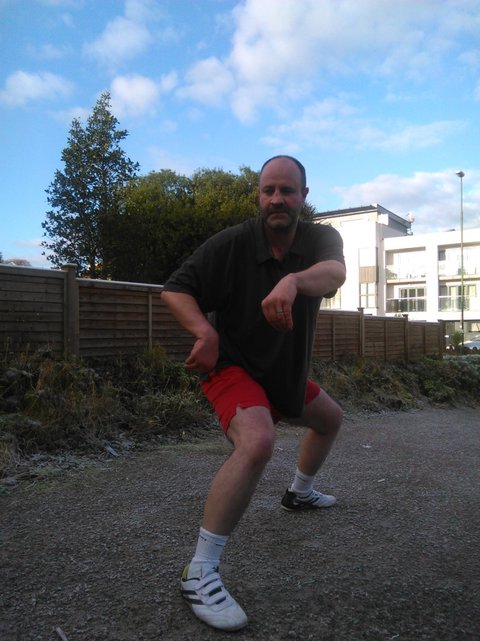Definition: Kata-Form (形 - xing2)(Translation by Adrian Chan-Wyles PhD)The Okinawan martial arts are derived from two distinct origins:
a) Indigenous Okinawan martial arts b) Chinese martial arts. As Japan has had a presence on this island nation (through invasion) since 1609 CE, a case can be made for an influence for Japanese martial arts – although generally speaking, Japanese people proper – tend to view the ‘Okinawans’ as ‘foreigners’ living within geographical Japan (Okinawa was formally annexed by Japan in 1872). Prior to this, Okinawa was an acknowledged part of China for well over a thousand years (as a tributary State), although many Okinawans view themselves as living within an independent sovereign nation that has made certain and specific cultural choices throughout its history. The well-known martial arts term ‘kata’ is the Japanese pronunciation of the Chinese term ‘形’ (xing2), which is comprised of the particles ‘彡’ (shan1) meaning hair that sprouts and becomes ‘apparent’ through ‘growth’, and ‘开’ (kai1), which signifies two-hands that initiate action and work together as ‘one’, to achieve an effect in the physical world. Therefore, ‘kata’ (形 – xing2), is an expression or mode of behaviour that expresses a certain intended reality, or form of being. Within Chinese dictionaries, ‘形’ (xing2) is also described as implying the correct ‘imitation’ of a specific mode of behaviour, that creates a distinct ‘appearance’ in the physical world. It can also mean ‘contour’, as in the ‘texture’ of any given expression that can be seen in broad daylight. Kata can also be written using the Chinese ideogram ‘型’ (xing2). Contrary to certain English texts implying that ‘形’ is a simplified version of ‘型’ (both categorised as ‘xing2’ in modem pinyin) each ideogram is in fact considered a ‘traditional’ expression in its own right, with neither possessing a ‘simplified’ version. In the case of ‘型’, it is comprised of the particles ‘土’ (tu3) meaning ‘earth’ or ‘clay’, and ‘刑’ (xing2) meaning ‘punishment’, or ‘penalty’, (literally a hand ‘开’ using a knife or sword ‘刂刀’). This is why ‘型’ carries the over-all meanings of ‘pattern’, ‘mould’, ‘standard’, ‘law’, ‘model’ and ‘style’. Through correct (and repeated) practice, the clay-earth is slowly moulded into the required shape. Of course, correct practice is regulated by a set of precise instructions (or ‘laws’) that must be steadfastly followed and applied if mastery is to be achieved. A translation generally favoured in the West (within Chinese martial arts practice) for ‘形’ (xing2) is ‘form’, but it might be better translated as ‘shape’. A ‘form’ within Chinese martial arts is comprised of a number of self-defence movements involving specific stances and elaborate footwork, combined with various kicks, punches, throws and evasions, as a means to convey a particular lineage of martial history that developed a ‘style’ of combative science, premised upon a real experience of deadly warfare gained upon the battlefield (often of an ancient origin, and certainly prior to the founding of modern China in 1949). As each style was founded by a powerful martial individual, he or she chose a ‘specific’ expression of their martial system, premised upon their personal experiences in combat. As everyone’s experiences are deeply personal with regards to the horrors of warfare, many different expressions of martial efficiency grew into existence. Therefore, a ‘form’ or ‘kata’ is the ‘essence’ or the very ‘heart’ of a martial system that conveys the deepest meaning and the profoundest wisdom. Not only is a traditional ‘form’ or ‘kata’ a vehicle for martial excellence, but through the specific shapes (and psychological and physical conditioning required to perform these ‘forms’), longevity and health are an important by-product of proper and correct martial practice. ©opyright: Adrian Chan-Wyles (ShiDaDao) 2017. |
